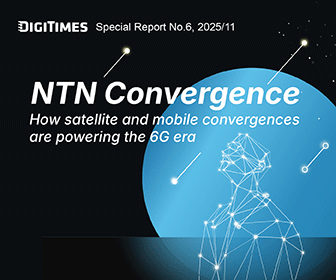India is currently witnessing a revolution in the automotive industry, with the increasing demand for electric vehicles (EVs) driven by rising fuel costs, environmental concerns, and the need for sustainable transportation. Official data suggests that sales of EVs in India have surpassed the 100,000-unit milestone for the fifth consecutive month in February with 106,107 new registrations, an improvement from January's 101,060 units and December 2022's 102,522 units.
However, for electric mobility to truly take off, the development of a robust charging infrastructure is essential. According to government sources cited by local media, as of January 23, 2023, India had only 5,254 public EV charging stations to cater to a total of 206,500 EVs, meaning that for every 393 electric vehicles in the country, there is only one public charging station. To put it in perspective, in the US, there is one EV charging station for every 19 electric vehicles.
Clearly, these numbers fall far short of the ideal for the Indian EV market to reach its goal of 30 percent penetration by 2030. But an even bigger problem is that these figures, even when officially announced, are not entirely reliable. Moreover, there is no clear differentiation in the number of chargers for different categories of vehicles. DIGITIMES Asia spoke to two prominent companies active in this field to get a better idea of the situation.
Robust growth in 2022
Despite concerns, the growth in the number of public charging stations has been significant over the last year, increasing as much as tenfold, according to Sameer Ranjan Jaiswal, CEO of Charzer. This sets the stage for more robust growth in the future and presents a significant opportunity for businesses and investors to contribute to the country's sustainable development goals.
"The number of charging stations has now increased, especially in metro cities," Jaiswal explained. "Two years ago, charging stations were very limited in numbers, but now at least in metro cities, we'll find an ample number of charging stations. If you combine that with the efforts of giants like Indian Oil – even we are setting up charging stations at Indian Oil gas stations – you would see charging stations reaching Tier 2, 3, and 4 cities. So, it won't be just the big cities, but even smaller towns and highways are getting access to public charging."
Speaking of passenger four-wheeler cars alone, Awadhesh Jha, executive director of Fortum Charge & Drive India, said that at present, there are about 3,000 public fast charging stations and an equal number of slow charging options. This could increase to 10,000-12,000 this year.
"Most of the growth we see now occurred over the past year, which witnessed a rapid increase in the pace of development," Jha said. "The reason for this trend is quite apparent – the sales of EVs have also surged over the same period. Hence, the growth of EV infrastructure and sales of EVs are interdependent, with one influencing the other."
Overcoming infrastructure challenges
The reliability of EV charging infrastructure is a crucial aspect of ensuring the seamless transition to electric mobility. According to Jaiswal, this issue is prevalent not just in India but across the world.
"There are a few angles to this," Jaiswal said. "If you look at the data from the US, 30 percent of all charging stations are non-functional at any point. And one in every five charging sessions is a failure. So, network health and network reliability are major concerns. There are some companies in India for whom the network health is 10-20 percent. This means that for every ten chargers that they have put out there, it's just one or two chargers that work. This holds true for startups as well as large corporations getting into this space."
This means that companies have to approach this sector with an innovative mindset. Fortum, for example, offers a load-balancing feature to tackle the issue of limited transformer capacity. Traditionally, if a company wants to install five charging points with 60-kilowatt capacity but the distribution transformer can only handle a maximum of 200 kilowatts, the utility company would require a separate transformer to be installed, resulting in increased costs. However, balancing the load among the chargers can provide a viable solution to this issue.
"Consider a scenario where we have contracted for 200 kilowatts," Jha explained. "If five cars requiring 60 kilowatts attempt to charge simultaneously, we would incur additional charges from the electricity companies. In such cases, we issue a command to lower the charging capacity, reducing the load for all chargers from 60 kilowatts to 50 kilowatts. This prevents an overload on the infrastructure, maintaining grid stability. While the speed of charging is marginally reduced, the impact on the grid is eliminated."
Conclusion
India's electric vehicle market is growing rapidly, with sales surpassing the 100,000-unit milestone for the fifth consecutive month in February 2023. However, the development of a robust charging infrastructure is crucial for electric mobility to take off in the country. Despite significant growth in the number of public charging stations over the last year, India still has a long way to go to achieve its goals.
Reliability of the charging infrastructure is a major concern, with many companies facing issues with network health and reliability. However, innovative approaches such as load balancing can provide a viable solution to these issues. The market presents a significant opportunity for businesses to contribute to the country's EV goals while overcoming the infrastructure challenges.




